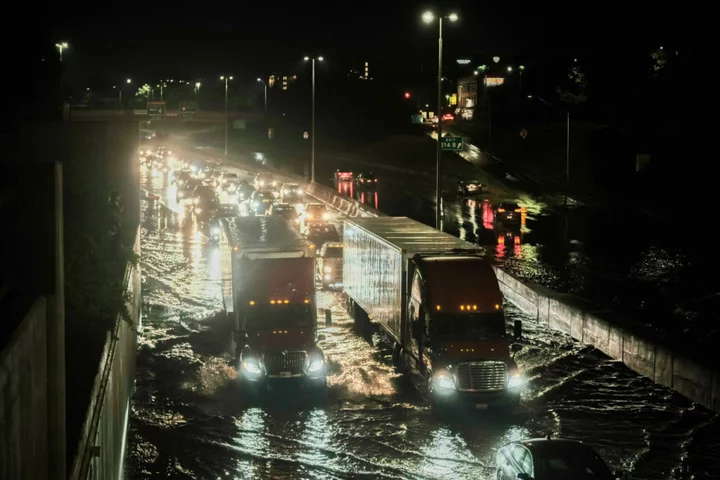Climate 101 is a Mashable series that answers provoking and salient questions about Earth’s warming climate.
A deadly deluge in China trapped passengers on a subway train with water creeping up to their necks. Rescuers floated on rafts through Vermont's capital city. A flooded river demolished national park infrastructure.
Indeed, on our continually warming planet the rains are growing more extreme, the floods more devastating.
Atmospheric scientists know why. When air temperature is warmer the atmosphere can naturally hold more water vapor (heat makes water molecules evaporate into water vapor), meaning there's more water in the air, particularly in many humid or rainy regions. Consequently, this boosts the odds of potent storms like thunderstorms, mid-latitude cyclones, atmospheric rivers, or hurricanes deluging places with more water.
"Once you have more moisture in the air, you have a larger bucket you can empty," explained Andreas Prein, a scientist who researches weather extremes at the National Center for Atmospheric Research. As research shows, this can result in pummeling downpours. "You can release more water in a shorter amount of time — there's very little doubt about that," Prein said.
SEE ALSO: The first images of Earth are chillingMassive flooding ensues. The summer of 2021, for example, was rife with vivid, and at times jaw-dropping, examples. Damaging and sometimes extremely deadly floods recently hit Europe, New York City, India, China, Detroit, and beyond.
Importantly, a warming climate doesn't mean it's always going to rain profoundly hard. It means there are boosted odds for strong storms to pick up extra water vapor in the atmosphere, resulting in these extreme deluges that drop many inches of rain in just a few hours.
"You're loading the dice," emphasized Brian Tang, an atmospheric scientist at the University of Albany. "The risk of a lot of rain over a short amount of time will increase."
For every 1.8 degrees Fahrenheit of warming (or one degree Celsius) the air holds about seven percent more water vapor. Earth has warmed by just over 2 degrees Fahrenheit since the late 1800s, resulting in more storms significantly juiced with more water. That's how urban areas, even with flood control infrastructure, can get overwhelmed with water. And sometimes, storms stall over land, resulting in immense, unprecedented flooding, like during record-breaking rains from Hurricane Harvey.
No one expects the rains to relent. Civilization's energy system is certainly headed in a significantly cleaner direction, but the global economy is still largely dominated by fossil fuels that emit potent heat-trapping gases into the atmosphere, meaning the world will almost certainly keep warming for a few decades, if not well beyond. Expect extreme or unusual deluges, particularly in places that receive plentiful storms, like the Northeast. (The amount of precipitation during the heaviest rain events in the Northeast has already increased by 71 percent between 1958 and 2012, and other U.S. regions have seen sizable increases, too.)
"Our best state of knowledge is they will continue to increase," said Tang, referencing heavy rains in the Northeast. "Expect more high-intensity rainfall and more flash flooding."
"You're loading the dice."It's certainly true that flood infrastructure — like diversion channels (see the L.A. river), dykes, and reservoirs — can limit major flooding. But at some point, with amplified rainfall, there can be too much water to contain.
"You can only prepare for so much," said Prein. "It's really hard to build infrastructure that can keep up with those flood volumes."
Want more science and tech news delivered straight to your inbox? Sign up for Mashable's Light Speed newsletter today.
Such is the reality on a warming planet. When the rains come, there's boosted odds of severe, if not unprecedented, water drenching the earth. It's one of the clearest consequences of a hotter world.
"What's striking to me is seeing the rate of change," said Prein. "It's getting worse really fast — we're living in climate change now. You can see it all over the globe.
This story originally published in June 2021 and has been updated.









